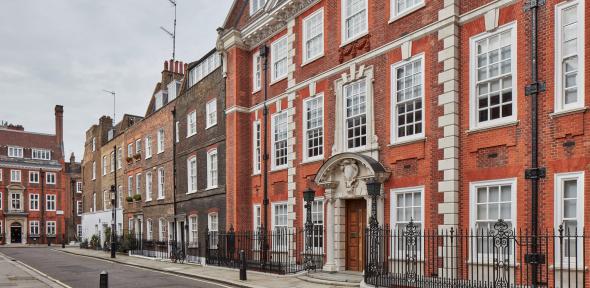Institute of Continuing Education (ICE)

Submitted by Amy Kingham on Mon, 21/12/2020 - 16:20
Inside ICE talks to the Course Leader of ICE’s new Architecture Masters-level Apprenticeship about balancing work with learning, the flowering of affordable housing, and how his mum re-directed his career path.
Timothy Brittain-Catlin was fed up at university, and it was his mum’s fault. He’d wanted to take a building course, but after strong A-level results, his mum vetoed that in favour of a prestigious Architecture degree. After five long years, however, Timothy knew inspiration wasn’t about to strike, describing his undergraduate education as “unfriendly” and “a fight”.
Despite that, Timothy stuck it out, earned his qualifications and set about learning his craft at architectural practices in the UK and Israel. As his experience grew over a varied decade – through house design, conservation work and large-scale masterplanning – architecture slowly hooked him in. So much so that he began to teach it, as well as studying a University of Cambridge PhD under the esteemed supervision of Professor Andrew Saint.
His mum now presumably forgiven, Timothy’s particular interest in residential architecture is revealed by his beautifully photographed and researched new book, The Edwardians and their Houses: The New Life of Old England.
“If you put it dramatically, you could say that the question of how to design a house was solved by 1910, and everything that’s happened since has simply been an experiment,” says Timothy provocatively. “It was also a time of flourishing for the design of small, comfortable, well-organised, well-built and cheap houses. Alongside famous examples, such as Hampstead Garden Suburb, are lesser-known successes, such as Gidea Park in Romford; a beautiful estate of houses that were very cheap, even by the standards of the day.”
As well as being a passionate architectural historian, it turned out Timothy was an excellent architecture teacher too: at the University of Kent, he won two awards for innovation and effective team teaching – skills highly relevant to the ICE Architecture Apprenticeship MSt which Timothy now leads.
The apprenticeship combines the architect’s second degree with the subsequent practical experience and final professional qualifications, with apprentices remaining employed and paid throughout. This approach minimises the financial stress placed on students following the traditional route and therefore significantly increases diversity of admission.
His unhappy time as an undergraduate informs Timothy’s course leadership today: “The old system wasn’t producing the right kind of people, and the gap had become too big between the practice of architecture and what students were doing in architecture school. We’re trying to remedy this while also providing genuine intellectual challenge. Apprentices on this course should be able to see enough, experience enough and learn enough to add genuine enrichment to their workplaces.”
The first cohort of apprentices began their opening module in summer 2020 – online, of course. “The apprentices are a good mix, from small and large practices, and we see them all as equals,” stresses Timothy. “We hope this route will attract a greater diversity of students to the profession of architecture.
“All our apprentices get to see the cutting-edge work of Cambridge researchers first-hand; everything from material science to community architecture on other continents and the sociological aspects of environmental design. They can ask questions and engage with academics directly, becoming a contact line between university and office.”
Award-winning architectural practice, Donald Insall Associates, has an apprentice in ICE’s first cohort, and Associate Director, Caroline Drake, is keen to discover whether the new pathway enhances career development: “Our first Architectural Apprenticeship is part of our social value commitment to Rochdale Borough Council; we lead the project to restore one of the most historically significant buildings in the country – Grade I listed Rochdale Town Hall.
“We think students benefit from a thorough and long-term experience of a project, so our apprentice is fully integrated into our project team, initiating teamworking skills and professional relationships at an early stage in their career, and the coursework allows further research and development opportunities. It’s early days, and there are challenges in making time to attend a course alongside work commitments, but we’re hopeful the collaboration will provide excellent practical experience and academic training for our apprentice.”
The difficulty of managing time is one that Timothy is also mindful of: “We’re very aware it can be frustrating for employers to lose their star assistant every Friday to academic commitments. It doesn’t account for the ebb and flow of business. What’s unique about our course is that between residential sessions, students can be flexible about when they carry out their academic work.
“From the students’ perspectives, we’re keen for them to understand that they’re genuine Cambridge college members [through Queens’ College] and a proper part of the University with all the access to resources and experiences that entails. We’re determined to foster a sense of open-door engagement, collaboration and community through this course, even at a distance.”
Find out more about the MSt Architecture Apprenticeship.
--------
This article was originally published as part of the Lent - Easter 2021 edition of Inside ICE.